Dear Steven,
Shana tova. Let us all hope that the new year is better than the last.
At the end of this month, my team will share with yours an update on our activities over the course of the past year. Before that, though, I’d like to review some remarkable developments underway in Poland.
Last week, I undertook a high-level visit to Poland to strengthen existing cooperation at both the governmental and non-governmental levels. Setting aside likely training programs with the Ministry of Justice, curriculum work with the Ministry of Education, and programming with the city of Kraków, we solidified a few partnerships with NGOs capable of sustaining our field of inquiry. Two deserve special mention: the Zapomniane Foundation and the in-progress museum and memorial project at the former Płaszów Concentration Camp.
The Zapomniane Foundation identifies, marks, and preserves mass graves of Jews murdered during the Shoah. Importantly, they do so with local non-Jewish communities, thereby building buy in from across Polish society. We met at the Warsaw Jewish Cemetery on Okopowa Street, a historically important cemetery that includes several mass graves and one of the few intact hiding places used by Jews in Poland to escape Nazi violence.
Today, the hideout is covered by a modest blue tarp. There is an attempt to build a proper edifice to protect it, but that remains in development. In 1942, this tiny hole in the earth was reinforced with bricks, steel beams, and headstones. It is only 6 x 5 x 8 feet and served as an occasional hiding place for Abraham Stolbach and his mother, Lea (née Klingberg), Dr. Izaak and Gutka Posner (née Zylbrajch), Halina Aroniak, and David Płonski. Izaak’s father, Abraham, was the administrator of the cemetery and built the hideout with Halina’s father, Moshe.
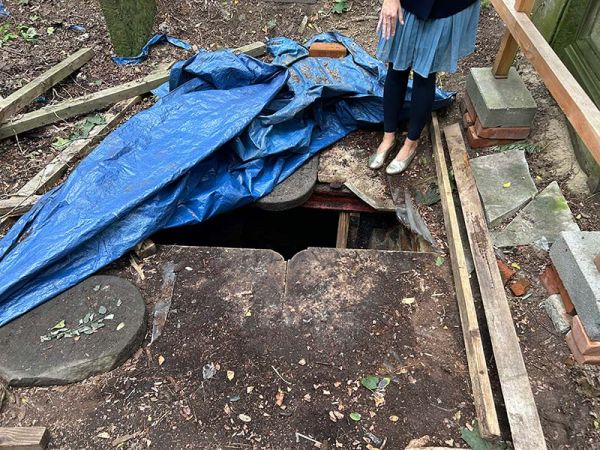
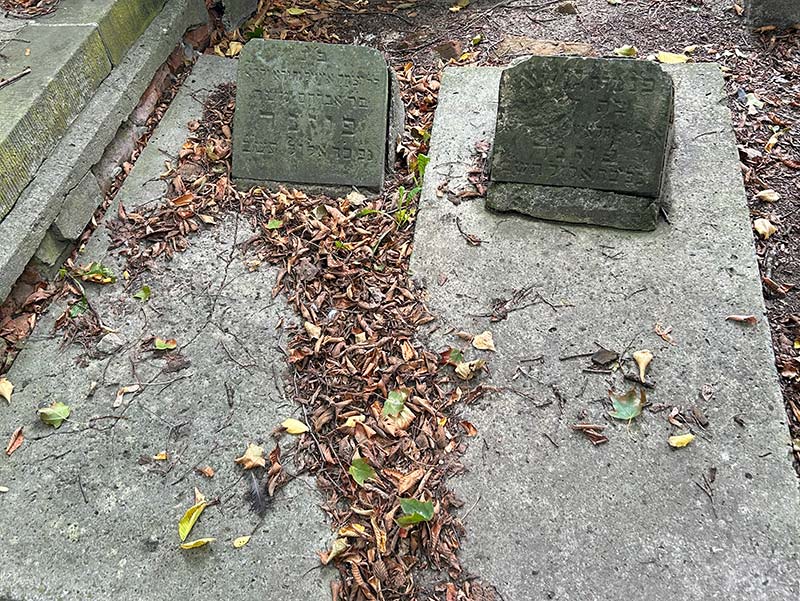
The Germans found Izaak and Gutka there in September 1942 and executed them. Soon after, Abraham Posner snuck into the cemetery at night, found the bodies of his son and his daughter-in-law, and buried them by hand in modest graves. We only know what happened thanks to a written testimony by one witness and our Shoah Foundation testimony of David Płonski, which we filmed in Kibbutz Meggido in November 1995.
The researchers behind this effort did not have access to our collection and only learned of David Płonski’s testimony thanks to secondhand information. Improved and free access to our materials might have surfaced this and many other hidden aspects of Holocaust history earlier. Indeed, we had a similar experience with a project underway in Croatia. The urgency to make our full collection freely available online remains a key priority (and I hope we might have positive news soon). As we build towards that, we have extended free access to several key institutions in Poland for the purposes of research.
One such institution is the memorial museum under construction at the former Płaszów Concentration Camp – a site you know well. Much of the initial camp comprised the site of two Jewish cemeteries. The outlines of the main cemetery are marked with white stones today.
As you know, the Nazis and their guards (mostly Ukrainian police auxiliaries trained at Trawniki) murdered thousands of Jews and buried the bodies in pits. Many of these bodies were later exhumed and cremated in 1944. Today, at least three mass graves remain. While there are signs, the site also serves as a city park and, as you will see in the photo below, on one such grave there is a park bench.
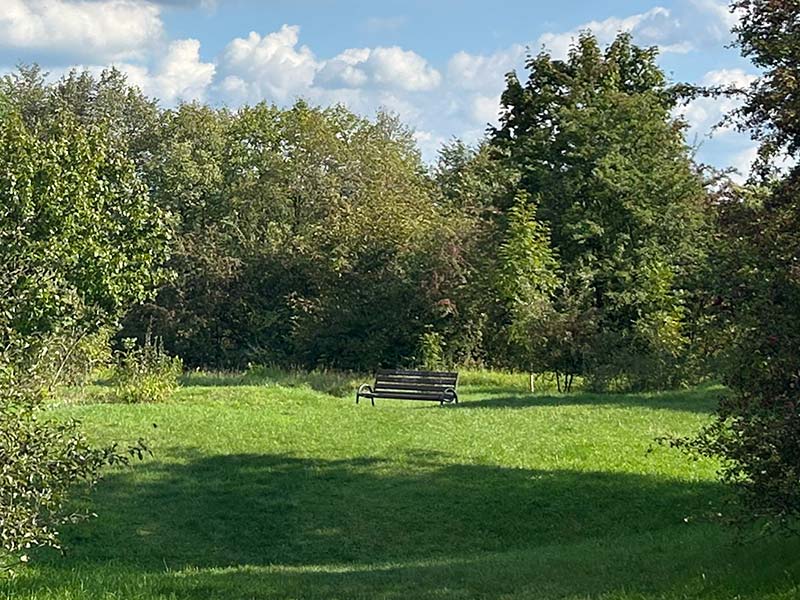
Mass Grave No. 2, Płaszów site, September 19, 2025.
The so-called grey building, which served as the main building for the cemeteries, is slated for renovation and will serve as one of the museum complex buildings. There is also a major effort underway to open a new museum building. The main building will be underground and located about 1,000 feet from the communist-era monuments to those murdered at Płaszów.
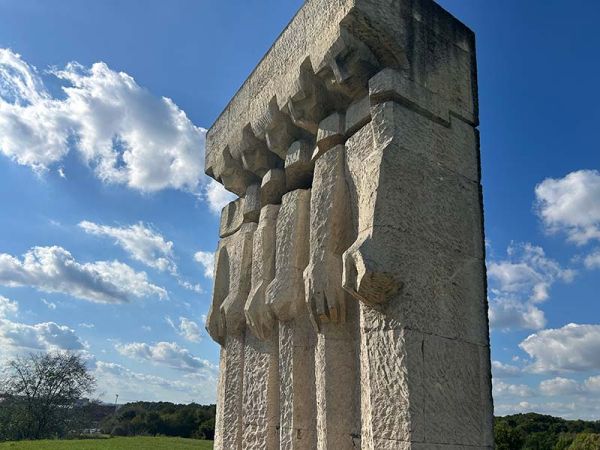
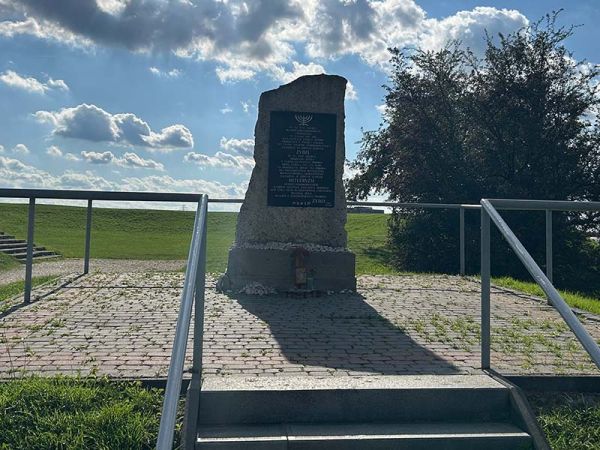
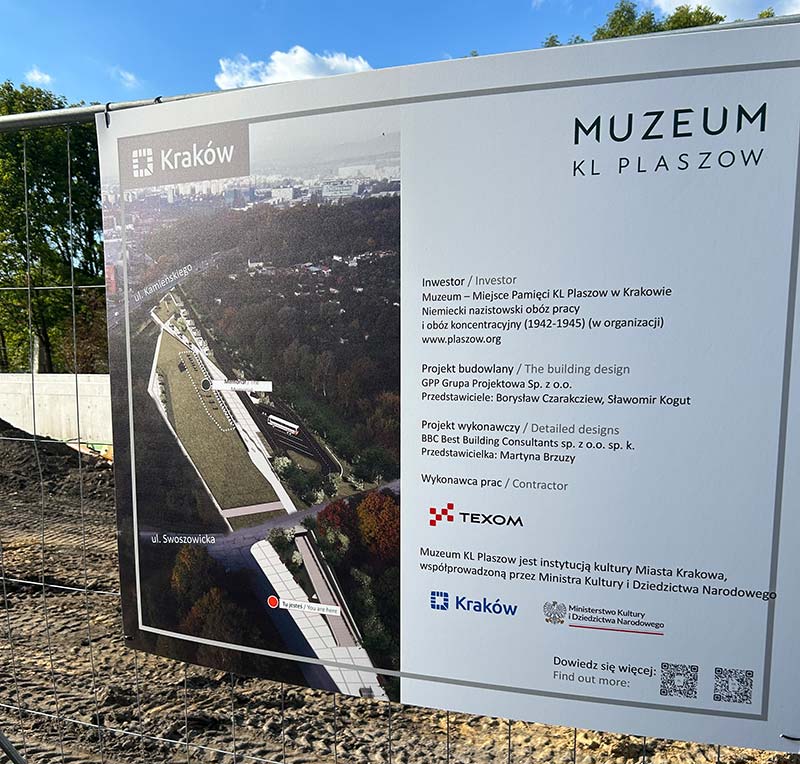
Site of the future Płaszów museum, September 19, 2025
The entire site is massive (approximately 37 hectares or 91.5 acres), powerful, and an important marker of the history of our subject. They were aware of about 500 of our testimonies of persons who survived Płaszów, however we have close to 1,400 testimonies that mention the camp. As they move toward the end of their construction project and the planning of an exhibition, they were beyond thrilled to now have full access to our holdings and a pledge to partner with them on a few initiatives in Poland and in the US.
For our field to survive, we must expand and sustain our work with partners across Poland. Half of all Holocaust victims were Polish Jews. The Nazis established at least 700 ghettos in German-occupied Poland, as well as a network of concentration camps and every killing center. Moreover, in addition to murdering some three million Jewish Poles, Nazi policies led to the murders and deaths of at least 1.9 million non-Jewish Poles. The perpetrators saw Jews and Poles through different lenses, but their fates intersected and at times paralleled one another. Securing mutual understanding of these intersecting fates will be a key step to achieving the same on a global level.
I am happy to brief you on all of this in more detail if it is helpful.
All my best and enjoy the start of autumn.
Sincerely,
Rob